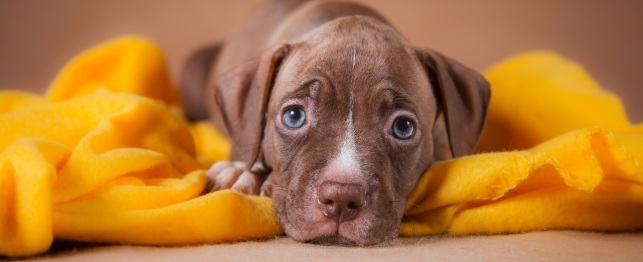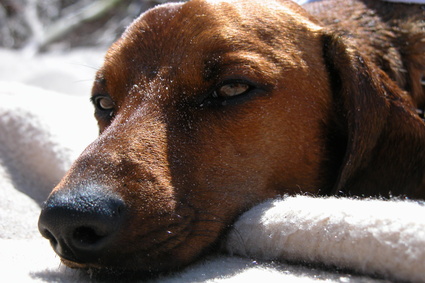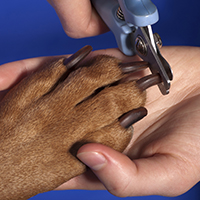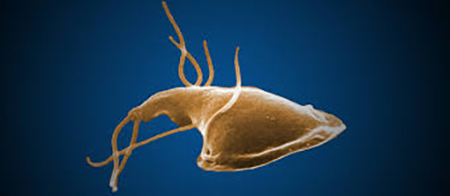Keeping Your Dog Safe on Halloween
Dogs
Ghosts and goblins. Witches and warlocks. Creepy crawlies. Not to mention Batmen, fairy princesses, and space aliens. For kids – and be honest – plenty of grownups, too, Halloween is a time when silliness gets a chance to shine. But for the dog of the house – or a cat or bird – the holiday can be a nuisance: A nightmare of doorbells that never stop ringing, loud noises in the night and too many strangers. For a cat – especially black ones – the haunted holiday can be downright lethal.
"Halloween can be just as dangerous as other holidays, even if it lasts just one night," said Ruth First, a spokesperson for the ASPCA. "After all, lots can happen in one night."
"We see substantially more pets than usual in the emergency room around the holiday, due to vomiting and diarrhea," says Debra Primovic, a veterinarian at the Animal Emergency Clinic in St. Louis. "Most of these cases are due to the animals getting into the kids' Halloween bags when nobody's around and getting into the chocolate." Here's how to keep your pet safe through a night of ghouls and goblins.
Safe At Home
This is a night to keep your pet close by your side. Don't leave a dog tied up in the yard alone and say no to a cat who normally goes out on his own for a ramble. Animals have been teased, stolen, injured – even killed – by trick-or-treaters carried away by the excesses of the holiday.
Keep your dog or the cat in a room away from the front door with plenty of fresh water and a familiar blanket. It may sound unsociable, but too many strangers in weird costumes can scare an animal. You don't want your dog to charge the door every time you open it – nor do you want the cat slinking out on the heels of the trick-or-treaters.
The best idea is to leave your dog home when you go out trick-or-treating. But if you can't resist, use a short leash to keep him from fighting with other animals or biting strangers out on the prowl. If you're out after dark, use a reflective leash or flashing safety collar so drivers can easily spot him.
If you decorate your house with Halloween lights, make sure wires are secured out of the way so your pet doesn't trip on them or chew them. Cats, birds and dogs are all naturally inquisitive and are likely to try to explore with their paws, mouths or beaks. Also, make sure all decorations don't have loose or sharp parts that can snag a tail or wound a paw.
Don't leave a lighted jack o' lantern unattended around pets. One exuberant swish of a tail can start a fire – or a quick sniff can burn a whisker.
Make sure your pet is collared and tagged with your name, address and phone number – just in case he manages to get out.Tricks and Treats
Don't put a pet in a costume unless he or she seems to like it. Many animals stress out when you dress them up. If you do put your pet in fancy dress, make sure it's safe: no constricting details that can obstruct hearing, movement, breathing or sight. Even the friendliest of animals can get snappy if they can't see or hear what's going on. If the costume attaches with rubber bands, make sure you remove them when you take off the suit. Otherwise, they can quickly work their way into the animal's skin. Also note that cats find rubber bands almost irresistible. Make sure the cat can't chew on them or swallow them; if ingested they can be life-threatening and require expensive surgery to remove them.
Halloween candy is not for pets: Chocolate is toxic for cats and dogs. Lollipop and candy-apple sticks can get stuck in an animal's throat or perforate the stomach or bowels; candy wrappers can cause obstruction and irritation to the digestive system. Make sure the kids know not to share their hoard, and keep the stash in a place the animals can't get to.

 White Dog Poop: What Does It Mean?
Wondering how healthy your dog is?
White Dog Poop: What Does It Mean?
Wondering how healthy your dog is?
 How You Can Tell if Your Puppy is Sick
How You Can Tell if Your Puppy is Sick
How You Can Tell if Your Puppy is Sick
How You Can Tell if Your Puppy is Sick
 Dog Insurance With Pre-Existing Conditions
Dog Insurance With Pre-Existing Conditions
Dog Insurance With Pre-Existing Conditions
Dog Insurance With Pre-Existing Conditions
 How to Make Your Own Paw Balm for Winter
To some dogs (especially breeds bui
How to Make Your Own Paw Balm for Winter
To some dogs (especially breeds bui
 Metronidazole For Dogs: What it is Used for and Guidelines for Safety
Dog owners today are armed with mor
Metronidazole For Dogs: What it is Used for and Guidelines for Safety
Dog owners today are armed with mor